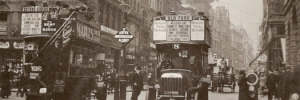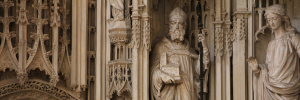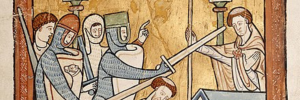London Bridge has a long history of destruction and construction. The first Roman bridge was built around 43 AD but it lasted less than 50 years before being replaced with an even more permanent structure in 55 A D.(There’s also this great model that shows how bridges evolved over time).
The decline of the Romans and their bridge left London without a means to cross until 878AD, when a Saxon wooden structure was built slightly upstream. This would be destroyed by Viking raiders in 1014 because they wanted nothing more than for this attack on Britain’s capital city -London-to succeed at any cost; even if it meant destroying everything around them including life itself!
London Bridge is one of the most famous bridges in all Britain, most probably for its history than the 1970s bridge currently there. The bridge was built up again during the reign of William the Conqueror only to fall down due to a tornado in 1091. A rebuilt bridge burnt down in 1136 and was rebuilt in 1163. In 1209 the bridge was rebuilt in stone. The famous Old London Bridge which was to last over 600 years. With houses, shops, a church and a gatehouse (with spikes displaying the heads of executed people) Old London Bridge was a sight that was famous across Europe.
The medieval stone structure with its Norman archway stood for 600 years before fading into history at some point during Henry VIII ‘s reign. Amazingly you can still see parts of Old London Bridge today.
The best place to start is St Magnus the Martyr church, a short walk from Monument Underground. The church, rebuilt after the Great Fire of London, was at the north end of Old London Bridge. Look out for the porch in front of the door, it was added as a pedestrian entrance to the bridge. Standing on that porch you are standing on the same spot from which hundreds of Londoners would have made their way across the river in the 17th and 18th centuries. On the other side of the churchyard, you will see some pieces of masonry lined up against a brick wall. These are stones from Old London Bridge recovered when the neighbouring building was built. While you are in the churchyard don’t miss the fragment of Roman quay preserved on one of the porch pillars, and if the church is open don’t miss the fantastic model of Old London Bridge inside.
In 1756 the houses on Old London Bridge were removed and new balustrades added, which included shelters with seats in. You can see one of these in Guys Hospital, just south of London Bridge Station, where a statue of the poet Keats has been added. You can also see more of them in Victoria Park in East London. The grisly spikes on top of the gatehouse are one of the most well-known features of Old London Bridge – the coat of arms of George III from the gatehouse was moved to the King’s Arms pub in nearby Newcomen Street.
Further afield, at Greenhithe near to the QE2 Bridge at Dartford, you’ll find Ingress Abbey which was built in 1833 using stone acquired from the demolition of Old London Bridge. Look carefully at the wall around the estate and you’ll see its made from blocks of Kentish ragstone – part of the bridge that Shakespeare, Pepys, Chaucer and Elizabeth I would have all known. Old London Bridge was replaced by New London Bridge in 1831, which in turn was taken down (apart from the very south section) and sold to an American businessman in 1967. You can go to Lake Havasu in Arizona to see that bridge. Meanwhile we have the very dull bridge that was opened in 1973 – I sometimes hope that one will fall down and we will get a more interesting design. Not very likely though, so more fun to look for bits of Old London Bridge – some of which you will see on our Great Fire of London tour!



